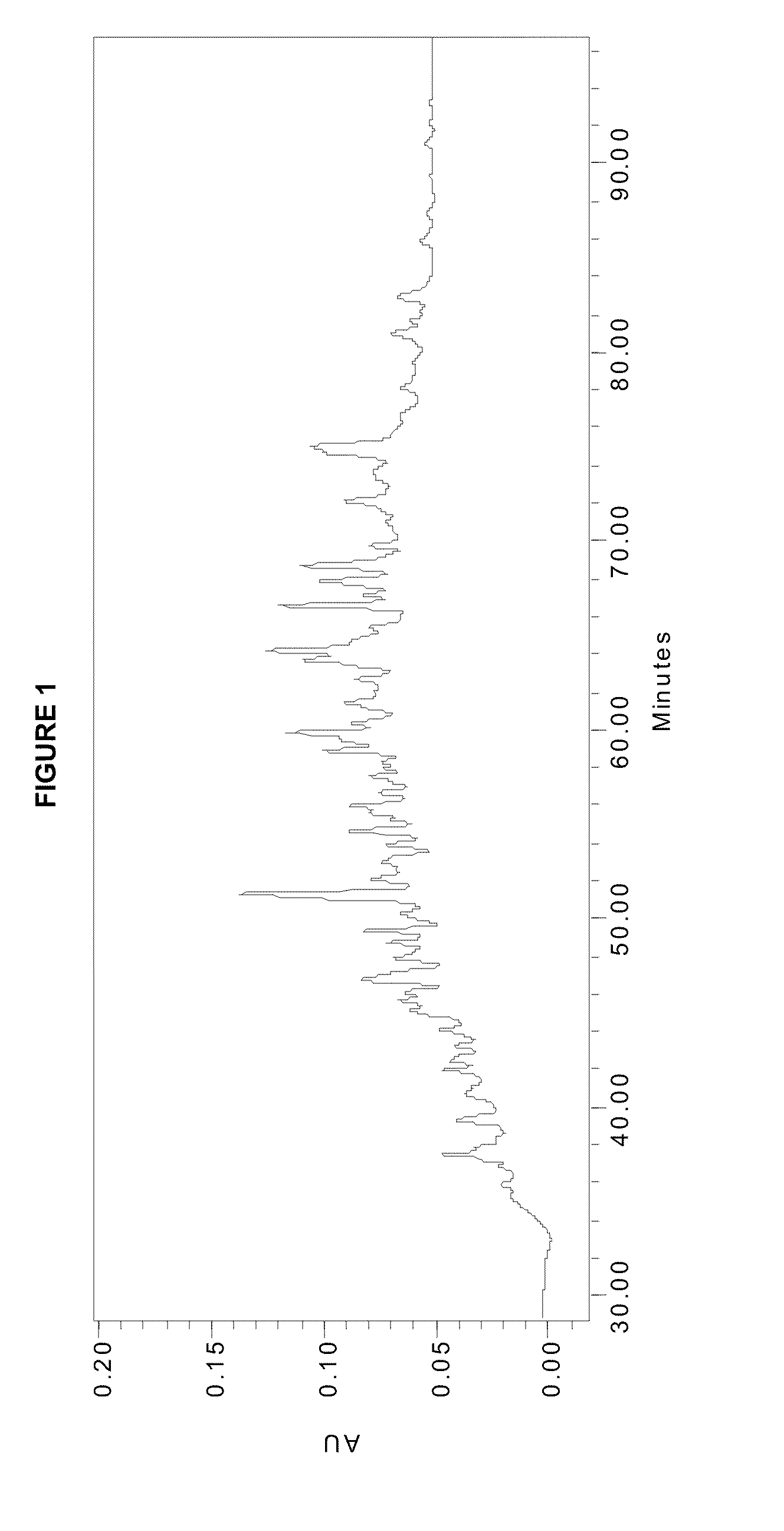Detection of glycopeptides and glycoproteins for medical diagnostics
a glycopeptide and medical diagnostic technology, applied in the field of glycopeptide detection, can solve the problems of not being very sensitive to technique, not as specific or sensitive, and high false positive ra
- Summary
- Abstract
- Description
- Claims
- Application Information
AI Technical Summary
Benefits of technology
Problems solved by technology
Method used
Image
Examples
example 1
Quantification of Stable Isotope-Labeled, Affinity Selected Glycopeptides for Diagnosis of Lymphoma
[0052]This is an example of using a stable isotope label, affinity selection, and glycoproteomics techniques to isolate and quantify changes in fucosylated peptides associated with canine malignant lymphoma. Using this approach, 46 glycopeptides were found to be elevated in serum from a dog with lymphoma. The same 46 glycopeptides decreased following chemotherapy when the dog was in clinical remission and subsequently increased during relapse of the cancer. When the pre-chemotherapy serum of this and two other dogs with lymphoma were analyzed and compared to normal serum, there were 22 similar peptides identified, of which 19 glycopeptides were increased with lymphoma. These glycopeptides may be used as biomarkers of cancer, monitoring patient response to chemotherapy, and indicating disease recurrence.
[0053]Samples. Normal, pooled canine serum (male, mixed breed, mixed age) was obtain...
example 2
Use of Glycan-Targeting Antibodies to Identify Cancer-Associated Glycoproteins in Plasma of Breast Cancer Patients
[0074]This is an example of using immunoaffinity chromatography (IAC) to isolate and identify potential cancer biomarker glycoproteins by targeting disease associated glycans. Glycoproteins were selected from plasma of disease free and breast cancer patients with an anti-Lewis x (Lex) IAC column. After extensive washing of the IAC column to remove abundant proteins, the selected proteins were eluted with an acidic mobile phase and identified in two ways. The protocol used in Route A involved the steps of tryptic digestion, reversed phase chromatographic fractionation of the digest, and identification of peptides in collected RPC fractions by MALDI-MS / MS. Route B differed in that IAC selected proteins were further fractionated by reversed phase chromatography (RPC) before proteolysis of individual chromatographic fractions and identification by MALDI-MS / MS. Route A was th...
PUM
| Property | Measurement | Unit |
|---|---|---|
| pH | aaaaa | aaaaa |
| volume | aaaaa | aaaaa |
| volume | aaaaa | aaaaa |
Abstract
Description
Claims
Application Information
 Login to View More
Login to View More - R&D
- Intellectual Property
- Life Sciences
- Materials
- Tech Scout
- Unparalleled Data Quality
- Higher Quality Content
- 60% Fewer Hallucinations
Browse by: Latest US Patents, China's latest patents, Technical Efficacy Thesaurus, Application Domain, Technology Topic, Popular Technical Reports.
© 2025 PatSnap. All rights reserved.Legal|Privacy policy|Modern Slavery Act Transparency Statement|Sitemap|About US| Contact US: help@patsnap.com



